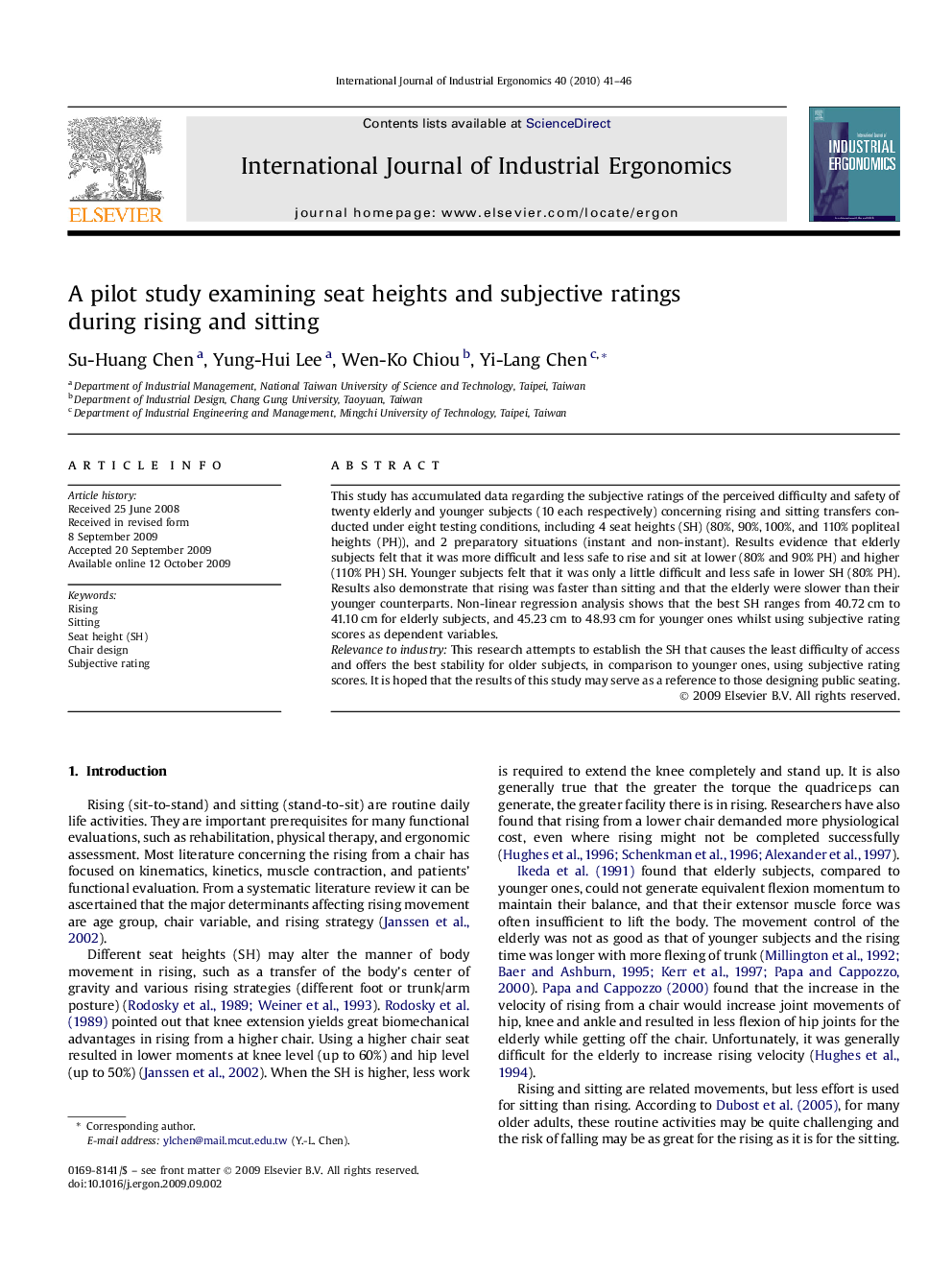| Article ID | Journal | Published Year | Pages | File Type |
|---|---|---|---|---|
| 1096540 | International Journal of Industrial Ergonomics | 2010 | 6 Pages |
This study has accumulated data regarding the subjective ratings of the perceived difficulty and safety of twenty elderly and younger subjects (10 each respectively) concerning rising and sitting transfers conducted under eight testing conditions, including 4 seat heights (SH) (80%, 90%, 100%, and 110% popliteal heights (PH)), and 2 preparatory situations (instant and non-instant). Results evidence that elderly subjects felt that it was more difficult and less safe to rise and sit at lower (80% and 90% PH) and higher (110% PH) SH. Younger subjects felt that it was only a little difficult and less safe in lower SH (80% PH). Results also demonstrate that rising was faster than sitting and that the elderly were slower than their younger counterparts. Non-linear regression analysis shows that the best SH ranges from 40.72 cm to 41.10 cm for elderly subjects, and 45.23 cm to 48.93 cm for younger ones whilst using subjective rating scores as dependent variables.Relevance to industryThis research attempts to establish the SH that causes the least difficulty of access and offers the best stability for older subjects, in comparison to younger ones, using subjective rating scores. It is hoped that the results of this study may serve as a reference to those designing public seating.
